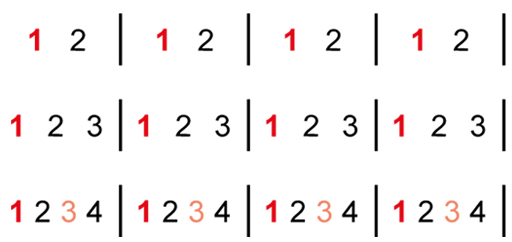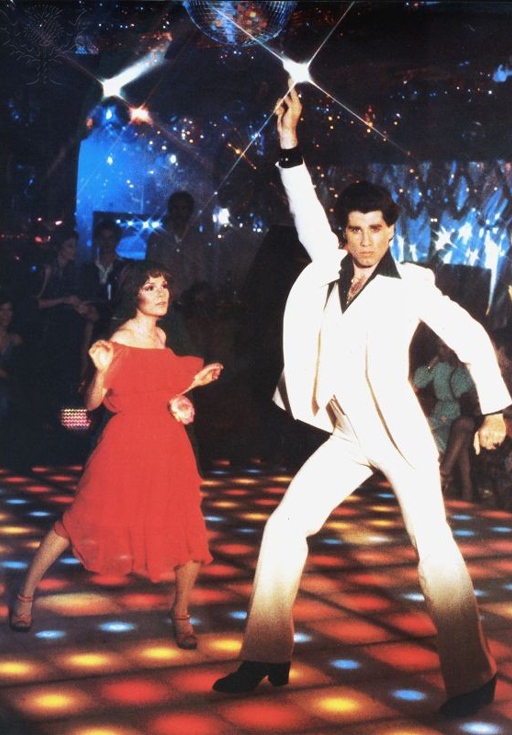3.1 Organising beats into two, three, four
This course has already established that the pulse consists of a regular pattern of even-length stresses (referred to individually as beats). Metre is a term that refers to the grouping together of a number of beats, and the hierarchy of stress patterns which may be established within these groupings.
Figure 4 shows three common groupings of beats, in patterns of two, three and four. You will notice that the first beat in each group is emboldened, and this indicates that it is a beat which is stressed (and so we can usually pick this out more easily when listening). In groupings of four, the third beat is also stressed, but not to the same degree as the first beat. You may have noticed this when listening to Audio 1.
Activity 4
Listen again to the audio extracts. When you have identified the pulse, try counting along with this and see if you can hear the stress patterns given to different beats. Audio 8 has a grouping of two beats, Audio 9 has a grouping of three beats, and Audio 1 has a grouping of four beats, and it may be helpful to know this information in advance.
If you are familiar with the famous dance move from the film Saturday Night Fever associated with Audio 1, you may notice that John Travolta stresses the first and third beats of the metre with an upwards pointing right arm, and the second and fourth beats with a downwards pointing right arm!
You have explored metres with two, three and four beats, but music is not limited to these. You will find a wide variety of metre, each using different stress patterns.


